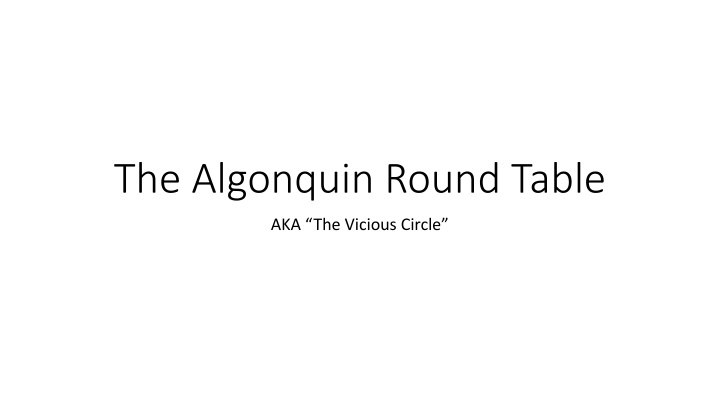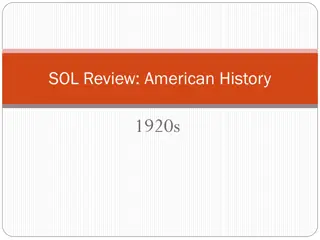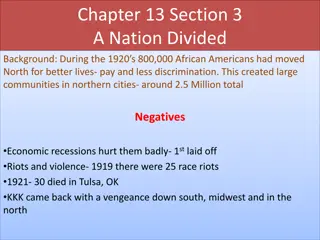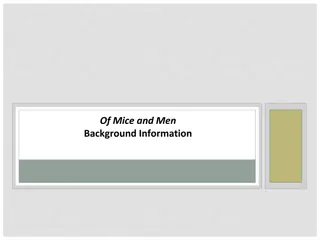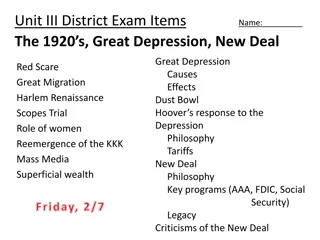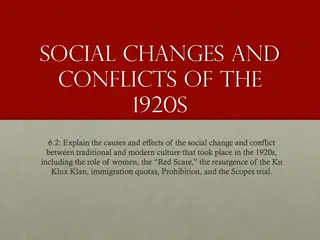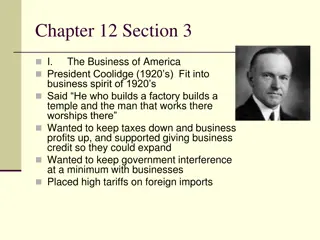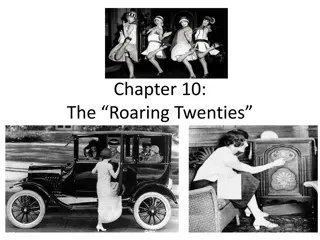The Algonquin Round Table: A Creative Gathering of the 1920s
The Algonquin Round Table was a diverse group of artists, writers, and critics who met at the Algonquin Hotel in the 1920s, known for their wit and irreverence. Members included notable figures like Dorothy Parker, Robert Benchley, and Harpo Marx, who influenced modern journalism and brought a fresh perspective to literature and criticism.
Download Presentation

Please find below an Image/Link to download the presentation.
The content on the website is provided AS IS for your information and personal use only. It may not be sold, licensed, or shared on other websites without obtaining consent from the author.If you encounter any issues during the download, it is possible that the publisher has removed the file from their server.
You are allowed to download the files provided on this website for personal or commercial use, subject to the condition that they are used lawfully. All files are the property of their respective owners.
The content on the website is provided AS IS for your information and personal use only. It may not be sold, licensed, or shared on other websites without obtaining consent from the author.
E N D
Presentation Transcript
The Algonquin Round Table AKA The Vicious Circle
What was the Algonquin Round Table? Group of artists, writers, dramatists, actors, and critics who met at the Algonquin Hotel for lunch every day. Began in 1919 (post WWI) and continued through the 1920s. Many (including Parker) worked for Vanity Fair or The New Yorker (which was started in 1925) .
Who were its members? Franklin Pierce Adams, daily columnist The Conning Tower for the New York Tribune Robert Benchley, humor writer and critic ( How to Sleep, Treasurer s Report ) Heywood Broun, columnist and sportswriter (married to Ruth Hale) Marc Connelly, playwright, Green Pastures George S. Kaufman, playwright (collaborator with Edna Ferber) Dorothy Parker, writer of light verse and fiction
Members, continued Harold Ross, founder and editor of The New Yorker Robert Sherwood, author and playwright Alexander Woollcott, critic and later radio personality (The Man Who Came to Dinner) Harpo Marx Tallulah Bankhead Edna Ferber, author (So Big, Giant)
Why should we know about these authors? Cultivated a sophisticated and caustic urban sensibility that pushed against the sentimental pieties of an earlier age. Important because of the quality of irreverence and wit that they brought to journalism, criticism, etc. Brought a kind of popular modernity and modernist sensibility to a market that was dominated by Liberty, The Saturday Evening Post, and so on through publishing in The New Yorker, The American Mercury (edited by H. L. Mencken), and so on. Took seriously and promoted the work of Gertrude Stein, Ernest Hemingway, Ring Lardner, and so on.
